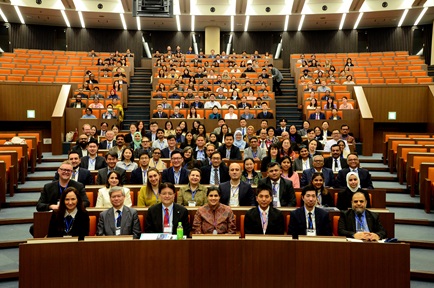Speaking of equality - let's extend that to workplace law
With a review of women's issues under way, it's time to look at legislation levelling the employment playing field for everyone
A national review of issues in Singapore affecting women was announced last month. Led by three female political office-holders, Conversations on Women's Development aims to bring about a mindset change on values like gender equality and respect for women.
However, a critical part of it should be a serious consideration of general, comprehensive legislation offering protection against discrimination at work.
What we have in place is very limited and fragmented legislation, with Singapore reliant mainly on education for ensuring employment equality.
Take a married woman employee who is pregnant and hopes to have a family. She is afforded some protection under the Employment Act as regards dismissal without sufficient cause during pregnancy and resulting loss of her pay while on maternity leave. But her legal rights, except where her contract provides, do not protect against lowered promotional prospects and training opportunities or reassignment to menial tasks because of maternity. Nor, if she is looking for a job, do they protect against discriminatory hiring. Besides, the law is silent on her protection against a host of other ways, other than maternity concerns, in which women and other vulnerable groups face discrimination at work.
Hence, we suggest Singapore should have a new law - call it the Employment and Occupational Equality Act - which will cover all kinds of unequal treatment and various categories of people who may face employment and occupational discrimination. It will put the muscle of law behind the protection and be clearer and more transparent and effective than what we have now.
It should be general in covering protection for the main grounds on which people may find themselves vulnerable to discrimination at work: sex and sexual orientation, race, ethnicity, religion, age and disability.
This aspect will not detract from the main focus of the current review - women's issues - but reinforce it by grounding that concern in the fundamental principle that should be the bedrock for making a society together: our equal dignity as human persons.
This protection should also be comprehensive in two ways. First, it should cover employment and also extend to ensuring equality in occupations, including the right to non-discrimination in access to professions and appointments.
Second, the protection should not be limited to discriminatory terminations, but cover the full range of acts by which one group may be made less equal to others at work.
Hence, it should afford protection against direct and indirect discriminatory hiring and firing, and discriminatory treatment in assessments and opportunities for advancement and training. And the protection should ensure fair and equal remuneration for work, bearing in mind that there can be differences based on the principle of equal pay for work of equal value.
These acts are discriminatory where differential engagement, termination or treatment are without objective justification based on the proper nature and purpose of the work.
A concern may be the fear of over-protection and possibility of defensive hiring. This can be addressed by a general exception made for bona fide occupational requirements: That is, those considerations for different treatment which are held in good faith and are relevant to the purpose of the employment or occupation at hand would not be held to be discriminatory. For example, where visual examination of something is key to the job, then it would not be discriminatory to rule out candidates with eyesight deficiencies.
PARTIAL LEGAL PROTECTION
The current protection rests on piecemeal and very limited legislation. The problem is that discriminatory intention obstructed in one form can take a different form.
There is some protection in the Employment Act for pregnant female employees, against dismissals during the pregnancy and on absence on maternity leave.
But such protection is limited to maternity-related cases and covers only dismissals.
However, there are other forms of discriminatory practices that women may face, such as those regarding promotion, bonuses and opportunities for training.
Another narrowly confined protection that may be considered a form of anti-discrimination law is afforded by the Retirement and Re-employment Act, which makes it an offence to dismiss on the grounds of age any employee who is below the minimum retirement age of 62, and allows such employees to make written representations to the Minister for Manpower for reinstatement.
An unintended blowback of this partial protection would be that where there is already prejudice, people approaching their late 40s and 50s may find it harder to get employed in the first place by such employers, or to obtain advancement opportunities if already employed.
Further, under Section 14(2) of the Employment Act, an employee who is "dismissed without just cause or excuse" may lodge a claim with the Employment Claims Tribunals for reinstatement or compensation.
A discriminatory ground of dismissal would arguably be such a dismissal "without just cause or excuse". Again, protection limited to dismissals on discriminatory grounds can backfire - by turning the discriminatory intent or fear towards unequal hiring or treatment of that category of persons.
EDUCATION AND ENFORCEMENT
The main general protection relies on education. The Ministry of Manpower (MOM), with employers' associations and unions, under the Tripartite Alliance for Fair and Progressive Employment Practices (Tafep), has drawn up guidelines which the MOM supports and tries within its administrative means to enforce.
There are many such guidelines. The use of these and MOM's efforts in supporting and enforcing them represent a massive intervention in how businesses are run in Singapore.
So the question is not whether we should make national efforts at promoting and protecting employment equality. We are already doing a great deal of this that affects the way business is carried out.
The question is whether the present system would not be better replaced or supplemented by a general framework of laws giving comprehensive protection against discrimination that would consolidate the protection offered under one legal framework; rationalise the protection so that there are not pockets and corners of non-protection; and put it on a rule-based, transparent, and ultimately judicially adjudicated system of law.
The difficulty with promoting ethical practices mainly with education is that sometimes the latitude available to persons or businesses willing to be unethical (in this case, unequal) gives them more room for manoeuvre, and provides them with a competitive advantage.
This advantage may take the form of less care and scruples over hiring, firing and management, allowing the employer to spend less time, care and expense over the process.
Or it may be in response to a segment of the public's entrenched discriminatory preferences. Even enlightened businesses and those with goodwill would be concerned about how their clients would react to more equal business practices.
And there would be niche advantages to businesses that pandered to these biases. As a consequence, sometimes discrimination can be profitable. This, of course, does not make the consideration a relevant employment criterion. It is all the more egregious because it reinforces and feeds off a public injustice.
The administrative means of enforcement which the MOM manages to marshal has the defect of being overly reliant on its powers over the granting of foreign employment passes and work permits to enforce its educational efforts and Tafep's. This means that its force is uneven, having more effect on businesses reliant on such human resources than locals.
WHY NEW ACT IS NEEDED
The merit of the suggested new law is that the principle of equality may be applied more consistently in every aspect of employment and occupations. Under the present system of guidelines and MOM administrative enforcement, what the employers gain through apparent flexibility is lost through the uncertainties of an exercise of administrative discretion.
A major concern for many, no doubt, is the potential drag on economic efficiency and imposition of cost over compliance with legislation. It must not be thought that there would necessarily be a net loss. There are economic gains as well to be had from a clear, transparent, certain and consistent protection through laws. It is uncertainty and risk that create inefficiency and run up costs.
Law courts, unlike administrative bodies, give full publicly accessible, reasoned grounds for decisions.
Further, they make these decisions after hearing evidence and witnesses under oath and subject to cross-examination in cases where the facts are disputed. Not only must justice be done, it must also be seen to be done - a feature not adequately fulfilled even by the best of administrative processes.
Moreover, the proposed law, as opposed to an approach reliant mainly on education, would level the playing field for businesses between those that play by the rules and those that do not.
What is fair and equal for employees would also be fair and equal between employers, disadvantaging only those whose intent or practices are discriminatory.
FINAL ARGUMENT
Will there be disruption of our current practices and discomfort from having to adjust to new ways of thinking and relating to others? Of course.
What would be the point of an initiative that did not make a difference? This is what is meant by our human dignity. We want to give everyone equal opportunity to make a life for himself or herself and then be responsible for the free choices made in respect of those opportunities.
But this must be available on a level playing field. No field of opportunity is more important in a society than employment and occupation. It makes sense to secure equal protection here.
Source: The Straits Times, 10 Oct 2020







